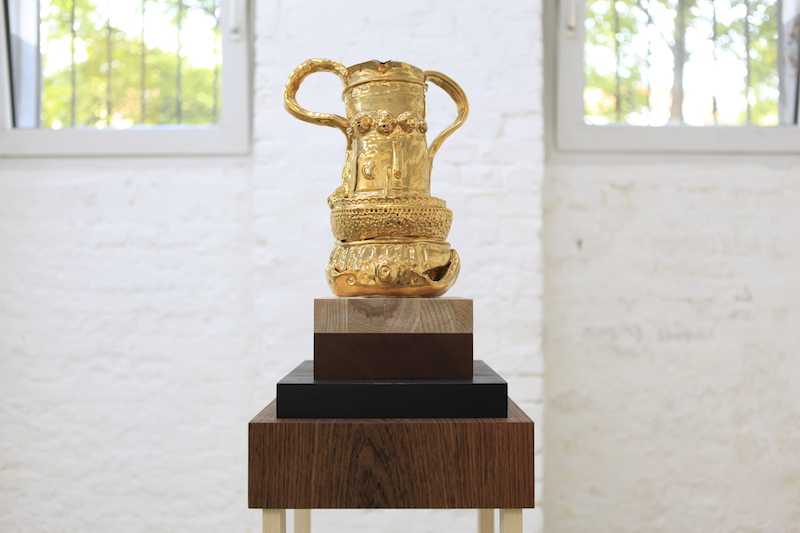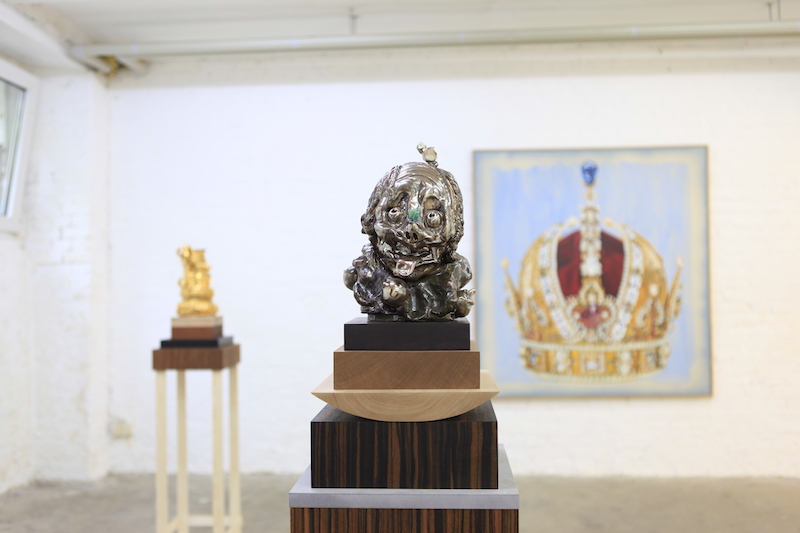 "22 sausages to stare at, praise and worship" (2015) © Sebastian Neeb
"22 sausages to stare at, praise and worship" (2015) © Sebastian Neeb
A few weeks ago "Praise and Trophy“ opened at Berlin art space Dzialdov. The show dealt with the question of how a certain symbolism can be held accountable for moments of sublimity, majesty and superiority. It asked how much these sentiments are rather a matter of traditions and emotions than of an actual expression of reality. Three different positions, Lars Bjerre, Max Dickhaus and Sebastian Neeb were invited to participate; I sat down with one of them.
With a diverse body of work, Berlin-based artist Sebastian Neeb (b. 1980) surveys how certain media can be used to guide, influence and control individuals as well as the mass and how closely real and fake values are linked together. In his idea, the awarding of trophies and titles is rather a matter of manipulation, a loose promise of a value that only exists in people’s head without having an actual materialistic counter-value. Following this concept, a new kind of character head is courting for leadership within his series "New Leader", while "Trophies for Outstanding Performance Over Decades" awards rather nonsensical achievements like the finding of an already emptied jug of wisdom.
Anneli Botz: You have a very precise, sometimes old masterly style within your paintings. Yet this is not the main scope of your work.
Sebastian Neeb: Exactly. My ideal is not to cultivate a certain style so people will then associate me with let’s say an old masterly way of painting. I much rather use this kind of style because of its cultural references and the emotions this triggers in people to confront them with an object that has a different connotation. For me, the style is more a distraction tactic that I kind of exploit to get to the viewer.
AB: Humour is another fundamental component of your work.
SN: The origin of my work is always the interplay between confrontation and the object itself. If I confront you with something humorous, then you are more likely to be open towards the subject matter than when I make, for example, a dramatic approach, which you might shy away from. Humour therefore is also a tool I choose intentionally to get a better and more direct access towards the spectator.
AB: Is this how for example wooden sausages came into play?
SN: Exactly. If I carve out wooden sausages and put them on a wall with a subtext saying “This is the place to worship the wooden sausage” then I have created a momentum in which the viewer can get lost. There are so many references to sausages within culture that everybody can gain some access to the matter. I mean just within the German language alone: “Hanswurst; es geht um die Wurst; verwursten” - there are endlessly many options and all of them relate to comic connotations. The sausage has both great entertainment and manipulative qualities.
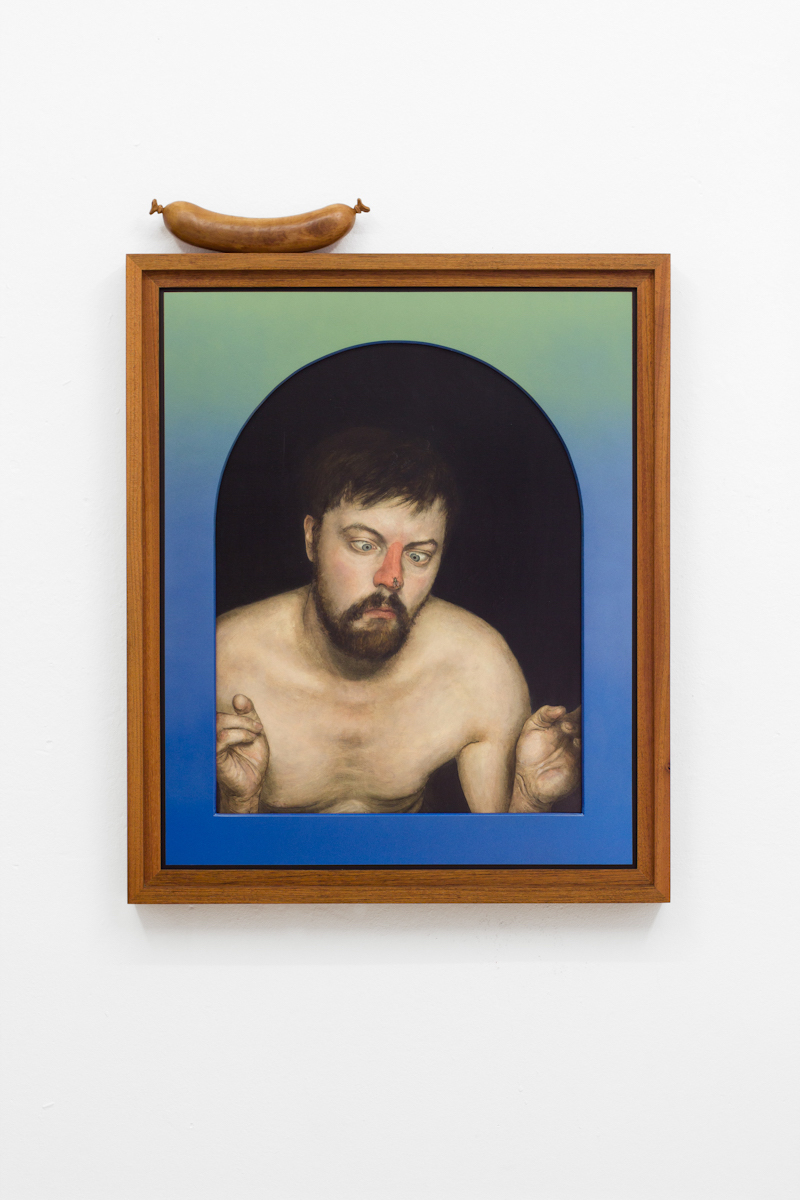

“Stare off with a fly, watched by a Wurst” (2015) © Sebastian Neeb
AB: You mentioned your style as a tool for access. At the same time this style is unusually refined. Your sculptures speak of an excellent use of material and your paintings are of a classic quality that is relatively uncommon today. How did you get into that?
SN: In the beginning - and I think this is true for many kids that show a talent for painting at an early age - my main scope was simply to create a copy of reality. I felt great joy when I managed to paint someone the way he actually looked and I loved the aura that was created by the way of the old masters. I was about 14 years old, when a Berlin painter took me in for a day a week so I could learn from him. His name was Wolf Ulrich Friedrich and he was an original porcelain painter who specialised in the depiction of classic act paintings for example. I stayed with him until I was 20 years old, so basically throughout my whole time at school.
AB: So you had no problem being inside painting and drawing while your friends where out in the streets playing football then?
SN: No, not at all. I started doing drawings and old paintings meticulously at the age of 12 or 13 and emerged in that world completely. I think I was about 13 years old when I went to gallery in Köpenick for the first time and asked them to exhibit my work.
AB: Quite bold.
SN: I think it was because I was always kind of told that I had some talent and got good feedback from my family while growing up. I would probably not dare to do this kind of thing today, but thanks to this youthful enthusiasm I was really open about my work and started selling watercolour paintings to antiquarian booksellers as a teenager. This then helped me to prove to my parents that I would potentially be able to make a living as an artist and that it made sense to continuously keep on practising. At the time I was finishing school I had a very elaborated way of painting, unfortunately one that nobody was really interested in. So I went to university to find out how I could turn my skills into something useful.
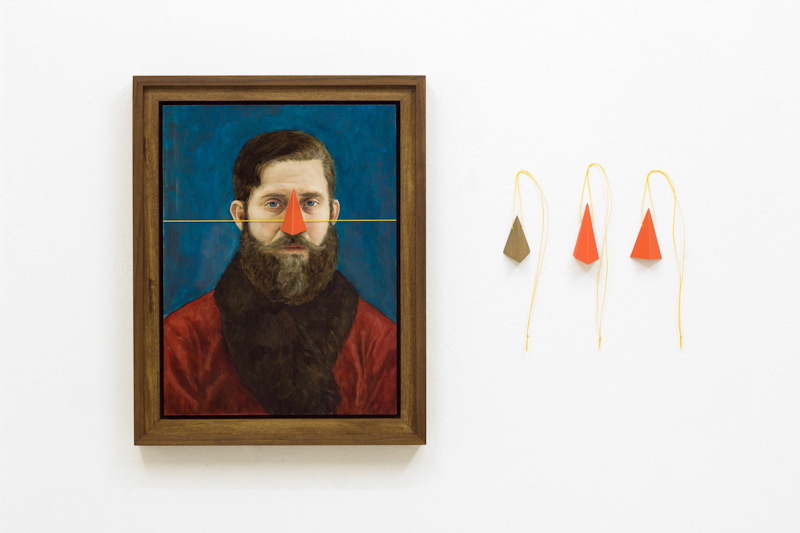 "Dritte Nasenprobe" (2015) © Sebastian Neeb
"Dritte Nasenprobe" (2015) © Sebastian Neeb
 "Dritte Nasenprobe" (2015) © Sebastian Neeb
"Dritte Nasenprobe" (2015) © Sebastian Neeb
AB: What was Berlin’s UdK like at the time?
SN: A little bit like a ninepins league. All the professors where from the 80s and somehow everybody had fallen out with one another - there was a lot of quarrelling going on. Once I entered UdK, I decided to specialise on sculptures, as I wanted to try something I had not done before. And at some point during those years Daniel Richter joined the university and I became a member of his master class.
AB: Was that a good decision retrospectively?
SN: Yes, I do believe it was. Back then Richter’s appearance brought some fresh ideas and perspectives to the university. After all he was a very relevant and renowned painter. He certainly had introduced a concrete objectivity into painting that was kind of unknown before and so much more liberate than what we had known from socialistic realism. He had a way of dealing with material in order to create these massive colour battles that I was fascinated by at the time. In the end, his time at UdK did not last long before he fell out with the university and left.
AB: How did he influence you as a teacher?
SN: It was important for him to focus more on why we would do something rather than how. He told us to constantly reflect on the motifs behind the work, to question the reason for using this or that kind of material and to think about potential art historical references. “Ask yourself any kind of question that somebody else could potentially be asking you”, was his credo. So that was useful. On the other hand he was not really there that much and whenever he came to visit the student’s studios he would be followed by this huge group of people. It was probably not always easy for everybody to be confronted with a, his strong personality and b, the mob of people following him around. Especially in times when you are trying to find yourself as an artist and address your insecurities. I imagine that being a little bit difficult for some, although I did not have these problems as my studio was outside campus and more secluded from the whole group. It was an interesting time, but we had other really capable professors too after Richter’s departure. Like Anselm Reyle, who again followed a completely different approach to art. His focus was the material itself and its power to manipulate.
AB: Like how?
SN: He dealt a lot with the use of materials that suggest being extremely valuable and precious while actually just stemming from a basic origin like shop window design. This way of how to approach and treat material is something I drew many important lessons from.
AB: A lot of your pieces deal with society this way or another. What interests you in the study of our system?
SN: We live in a world that believes that continuous progress will lead to a constant improvement of wealth and living conditions. But actually many of the needs we believe to have are simply simulated by society, and so are the differences of the world we live in. If there is a crisis then the media is dealing with it on all levels, but substantially nothing is really happening. The political parties are not really different anymore but rather high class specialized PR experts. It is all about how things appear and not what actually lies beneath. Real differences are nothing that society approves of. We are supposed to worship leaders that do not fundamentally stand for anything or differentiate from others and we are supposed to believe in needs that are only a simulation.
Sculptures © Sebastian Neeb, painting © Lars Bjerre, light installation © Max Dickhaus
AB: Is this where your sometimes funny and foolish looking character sculptures come into play?
SN: The cosmos I work in constantly requires new protagonists, like the series “New Leader”. I invent leaders that advertise there own agenda and that legitimize their thirst and claim for power in stating empty slogans and platitudes. A principle we are pretty used to from advertisements. Regarding the sculptural aspect I do not strive to depict a specific character but a displaced physiognomy that only hints towards human traits. In the end it often does not matter who is in power, but what he claims to be. Our reality is a creation and nobody will break out. Thus you can as well worship the sausage and all its different forms – in the end a sausage is a sausage, and that is often true for the leaders we follow. It is a pretty messed up system - a system that gives me a lot of joy.
sebastianneeb.de
sebastianneeb.de
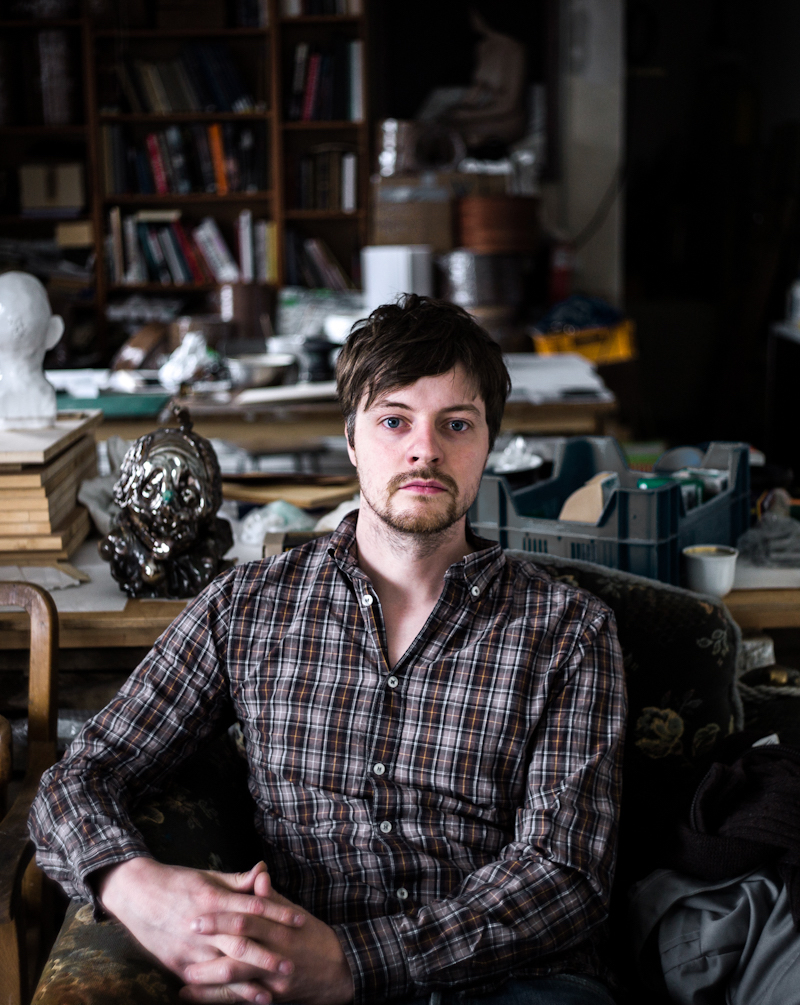 Sebastian Neeb, photo © Fred Dufour
Sebastian Neeb, photo © Fred Dufour


